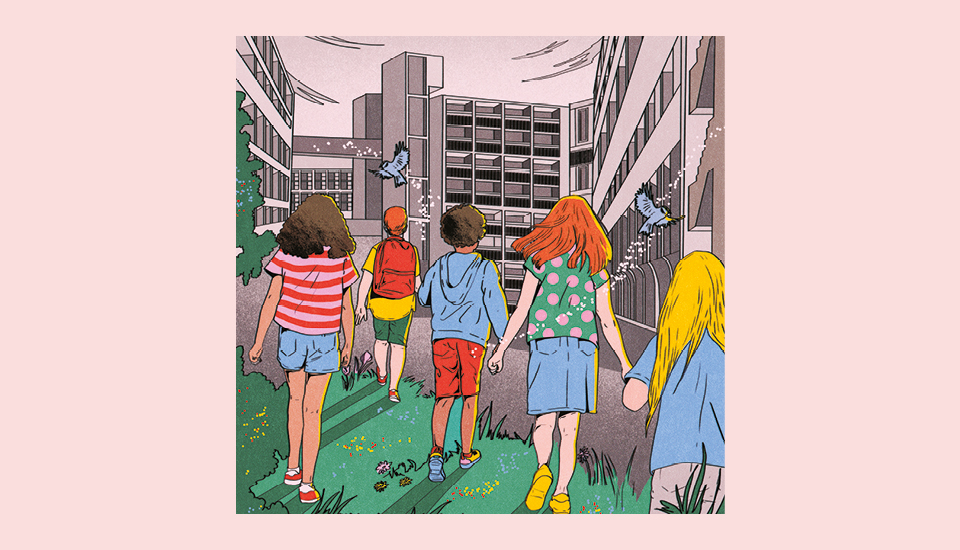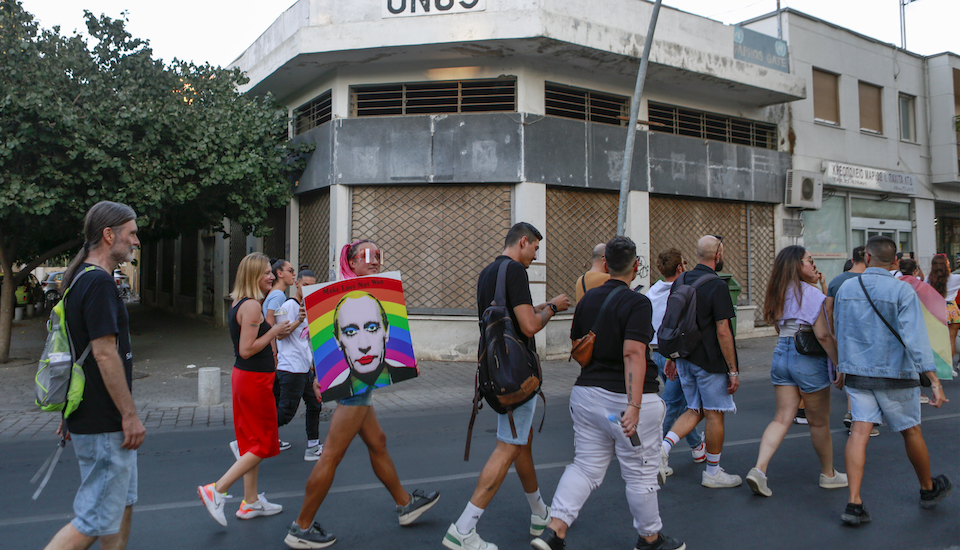What does it take to transform a neighbourhood into a community?
My work at Social Life – which specialises in exploring how individuals and communities are affected by changes in the built environment – is about the relationship between people and places. It takes me to local neighbourhoods and allows me to take part in conversations about how people feel about the places they live in and use. In 2019, with no knowledge of what was round the corner, I wrote in this journal: “When we feel that change is not working in our best interests, that it is restricting, rather than increasing, our options, then our sense of belonging in the future is threatened.” The concerns then in my mind were Brexit, Remainers versus Leavers, change and inequalities within and between neighbourhoods, and the multitude of pressures on communities, from global market forces to public sector regeneration programmes.
At the time, we were hearing concerns about belonging, not only in the present but also in the future. Would neighbourhoods and high streets be ‘for us’ in 10 years’ time? Since then, we have had a pandemic, the start of war in Ukraine, global economic pressures and soaring costs of living. Now, as we collectively experience extraordinary anxieties about strikes and political instability, high inflation and cost-of-living pressures, problems paying for heat, housing and food, this comment seems strangely prescient.
Our sense of belonging matters, whether to our local neighbourhood, our street, our workplace, our faith or our community (however we choose to define it). In the 1950s and 1960s, psychologist John Bowlby described the fundamental importance of attachment, highlighting how we are all social beings with a need to belong from our earliest days. His theories, substantiated by neuroscientists, demonstrate how belonging supports neurological development. Professor Louise Ryan of London Metropolitan University speaks about belonging as a dynamic process, changing over time and impacted by our complex and intersectional life experiences. Her work in Kilburn in London published in 2021 looks at the way that our attachments to place, our “embedding” and “disembedding”, change through time and are affected by external change, relationship change and the material circumstances of our lives.
Pandemic impacts
So, what do we know about the impact of the unexpected events of the early 2020s on our sense of belonging? In the UK, national surveys run by government and research councils measure our sense of belonging to our local neighbourhood. Understanding Society, the UK’s largest and longest-running longitudinal survey, shows that the number of us who agree or strongly agree that we belong to the neighbourhood we live in decreased somewhat more in 2021 than previous years. However, these differences are nowhere near as stark as the dramatic fall across all wellbeing indicators – from life satisfaction to anxiety – that the Office for National Statistics reported after March 2020.
The Greater London Authority’s 2021 Survey of Londoners shows that more people feel they belong to London than to their neighbourhood. It also showed how life circumstances and experiences of inequality and discrimination shape our sense of belonging: we are more likely to feel we belong to our local area if we are over 35, live in a less deprived area, and have housing security through homeownership or a council or housing association tenancy. We are less likely to feel we belong if we do not identify with a religion or think of ourselves as having a mixed ethnicity or affiliation with multiple ethnic groups.
The pandemic put massive pressures on our social relationships and our relationships with the places in which we live. For some people, it was a positive time with family and nearby friends, developing closer ties to community and neighbourhood in the narrower world of locked-down and restricted Britain. Others found themselves bereaved, under pressure at work, or in isolated, claustrophobic and even dangerous situations at home.
Just before, and during, the first lockdown, we spoke to people throughout the UK to understand how the built environment affected their quality of life. This research for the Quality of Life Foundation showed how the lived and built aspects of a person’s environment are connected to each other through local identities and relationships, as well as through the way we participate in and engage in neighbourhood life. During lockdown, appreciation of their local areas increased for many, helping them feel a sense of belonging at a time when many experienced isolation and disruption. It was striking how quickly people developed new routines that cemented their attachments, such as taking daily walks. One person told us: “I feel a lot more connected to my local area, I feel I know it a lot better. The repetitive walks have made me see more of the inequality.”
We also noticed how people’s emotional reaction to the pandemic changed over time. During the time of restrictions, our work became very London-focused, but we managed to keep talking to people at the sharp end of the pandemic and of wider social and neighbourhood change. Working in Catford, Hayes, Homerton, Southwark, South Acton and Surbiton, we saw how initial anxieties were matched by creative responses from grassroots groups and local services, and how relationships and local identity became important assets.
Later in the pandemic, we observed the cumulative strain on social relationships and our collective and individual resilience. The social and economic impact of the pandemic magnified existing inequalities. More people spoke to us about their concerns for others who they saw as vulnerable. We also heard about growing intergenerational resentment as older people stayed in and young people partied in parks. We found that people who faced the most difficulties were not necessarily living on the lowest incomes but were often those who did not have relationships with neighbours and local services. Belonging, when discussed, was a positive factor that helped buttress people against external strain and internal anxiety, but it was an asset that was not distributed evenly.
Young people in Southwark described how their sense of belonging to their local areas was linked to having friends locally, knowing their way around the neighbourhood and having strong connections to local institutions. The pandemic restricted many young people to smaller geographies, with churches, community centres, cafes, shops and local clubs closing or restricting access. Young people found themselves with limited spaces where they could socialise or build their networks of support. As one young person put it: “Before the pandemic, I really liked where I lived; it’s comfortable to me because it’s very welcoming, with many cultures and really diverse. During the pandemic, it felt less open and there is not a lot of green spaces.”
Some young people noted that feelings of belonging are not fixed. They described how the transformation of their neighbourhoods affected local relationships, attachments and the identity of local areas. One young person told us: “Lots of people had the same struggles as my parents; migrating to the country, lots of people had the same experiences. Now, we don’t feel like this… I need to push myself to relate to the people who move to the area. Shops and buildings are changing. I think I might need to move.”
A public health approach
Considering what we witnessed during the pandemic, what does this suggest about belonging in 2023, another time of high anxiety and economic and social pressures? Belonging is fluid. It is specific to our everyday experience and life choices, but also driven by the pressures we find ourselves under. It is also strongly influenced by what services and institutions do, how we are treated when we are in need of care or support, and whether our surroundings, our workplaces, even the shops and cafes we use, positively reflect who we are. We know that the design of our built environment, how it is managed and used, can boost or undermine belonging. We also know that the way social infrastructure operates – from formal welfare institutions like libraries and GP surgeries, to informal supports through cafes, WhatsApp groups and football clubs – also has a significant role.
We need to take a three-pronged, public health approach to belonging in our neighbourhoods and our local social spaces.
First, we must design for belonging, making sure that places feel welcoming and inclusive. ‘Poor doors’, playgrounds segregated by tenure, design that speaks to one group and not to others, do not make people feel at home. Benches and places to socialise that are placed so everyone can use them, design that does not differentiate on tenure and income, features that encourage ‘light touch’ neighbourly relationships and that link new development to the surroundings and to the local identity all can promote a sense of belonging.
Second, we need to create the supports and services that help people belong. This means focusing on building relationships and maximising social contact within and between groups. The We Walworth project, for example, is building social capital by developing a programme of local conversations and events that bring people together across the neighbourhood to find new ways of tackling inequality through food. Relationship-based practice in community-building and within services is becoming more widespread; however, it is something that is easy to talk about but more difficult to do. It can be challenging for established ways of working and hierarchies.
Finally, and critically, we need to value what is supporting belonging and be wary of change that undermines this valuable social asset. This means a preference for refurbishment rather than demolition – of estates, neighbourhoods or town centres – improving and evolving what is on offer to leverage the strengths of existing local identity. Contrast what has happened to two 1970s shopping centres: in Seoul, South Korea, the massive Sewoon Sangga shopping centre was refurnished to provide a maker space, new shops, a roof terrace and a community garden, but maintaining its original structure and its tenants, mainly lighting and electronics traders. In London’s Elephant and Castle, a purpose-built concrete shopping centre of a similar era was demolished, displacing the Latin American and West African traders who had successfully made it a centre of trade and business and of social and community support.
Promoting belonging in difficult times helps give people a sense of control when so many aspects of life seem precarious. Our sense of belonging to our local areas is a social asset built up over time, but we cannot take it for granted. Feeling that you belong cannot tackle food poverty or poor housing but can, as a central element of social capital, help people be more resilient and better equipped to manage difficult times. A firmer focus on designing for belonging while protecting existing social assets entails thinking differently about what the public sector and community agencies do and what matters most – this can be difficult during times of institutional stress when imaginations often narrow, but it is not necessarily costly. Belonging has the potential to become a new compass for a public sector struggling to cope with pressures of need, increasing costs and shrinking budgets.
Nicola Bacon is Founding Director of Social Life, which carries out research and practical projects in neighbourhoods across the UK and internationally
This article first appeared in the RSA Journal Issue 1 2023.
Related articles
-
Young at heart
Journal
Jonathan Prosser
Becoming a nation with children at its centre in 10 courageous steps.
-
Open RSA knowledge standards
Blog
Alessandra Tombazzi Tom Kenyon
After investigating ‘knowledge commons’, we're introducing our open RSA standards and what they mean for our practice, products and processes.
-
Worlds apart
Comment
Frank Gaffikin
We are at an inflexion point as a species with an increasing need for collaborative responses to the global crises we face.




Be the first to write a comment
Comments
Please login to post a comment or reply
Don't have an account? Click here to register.